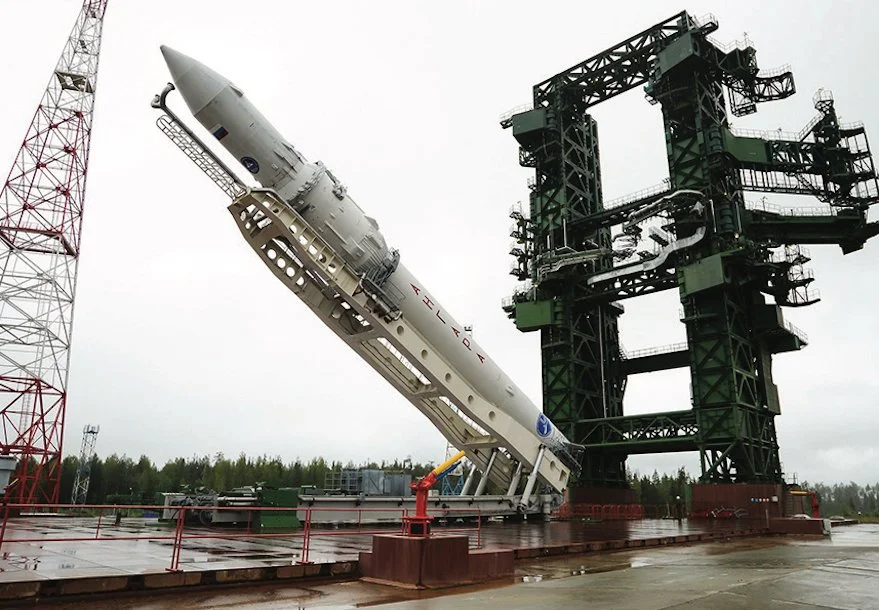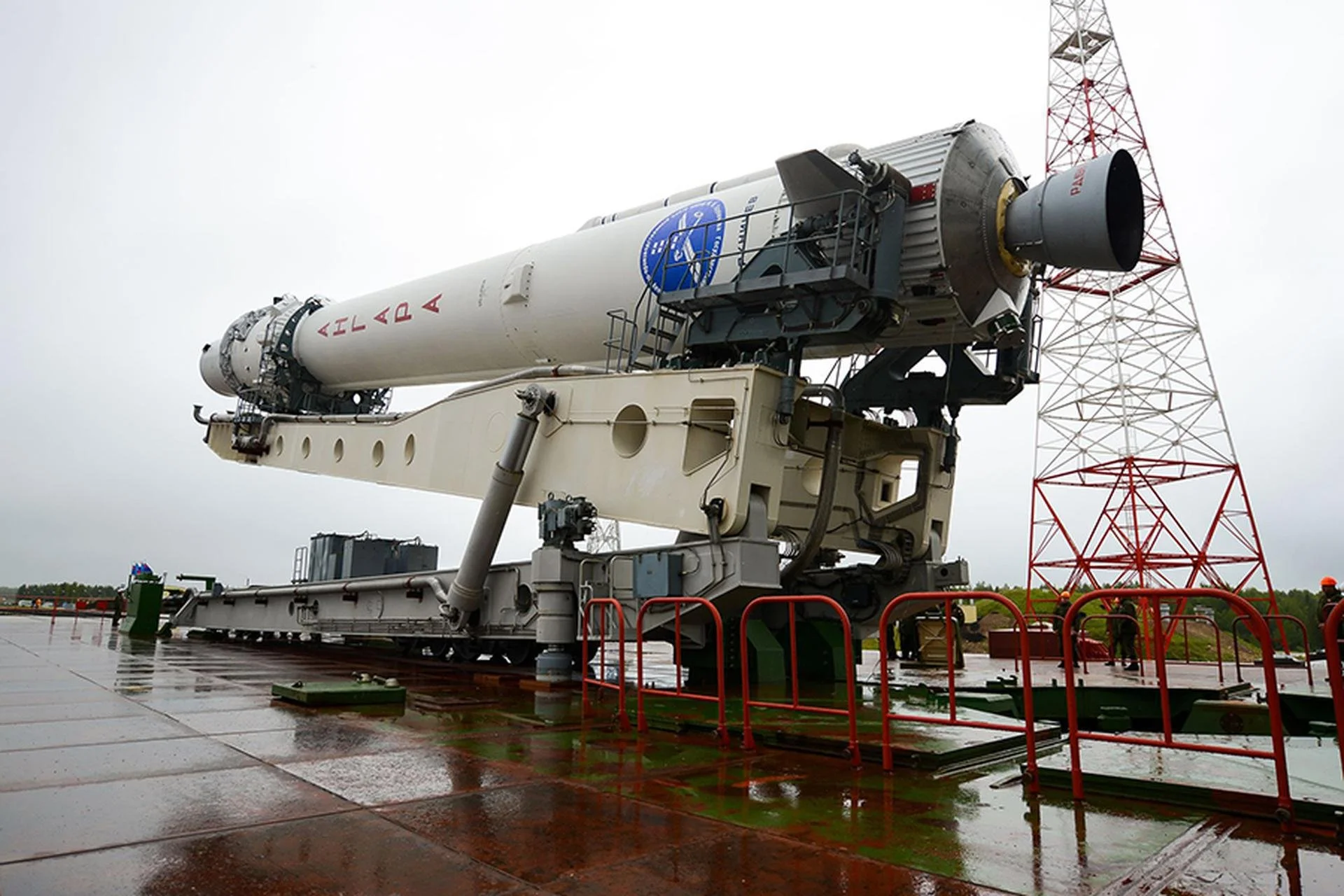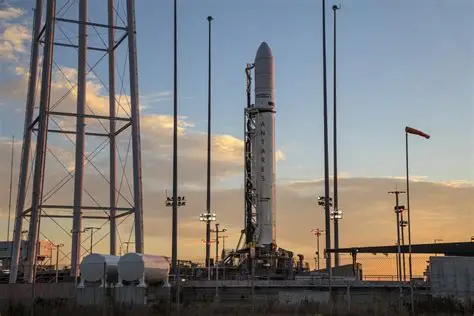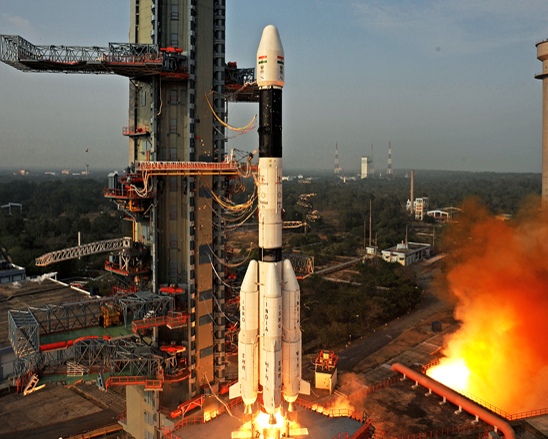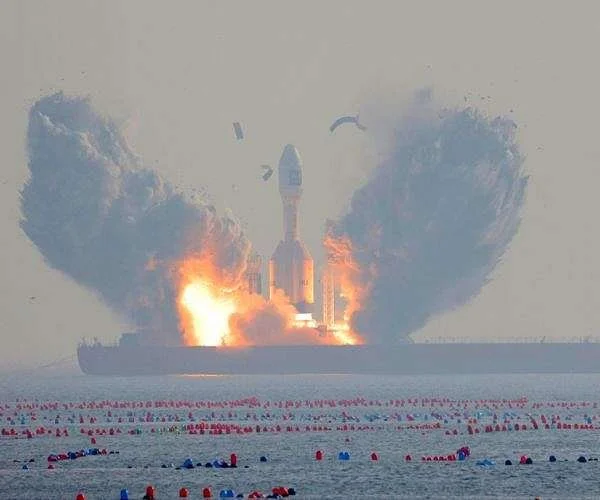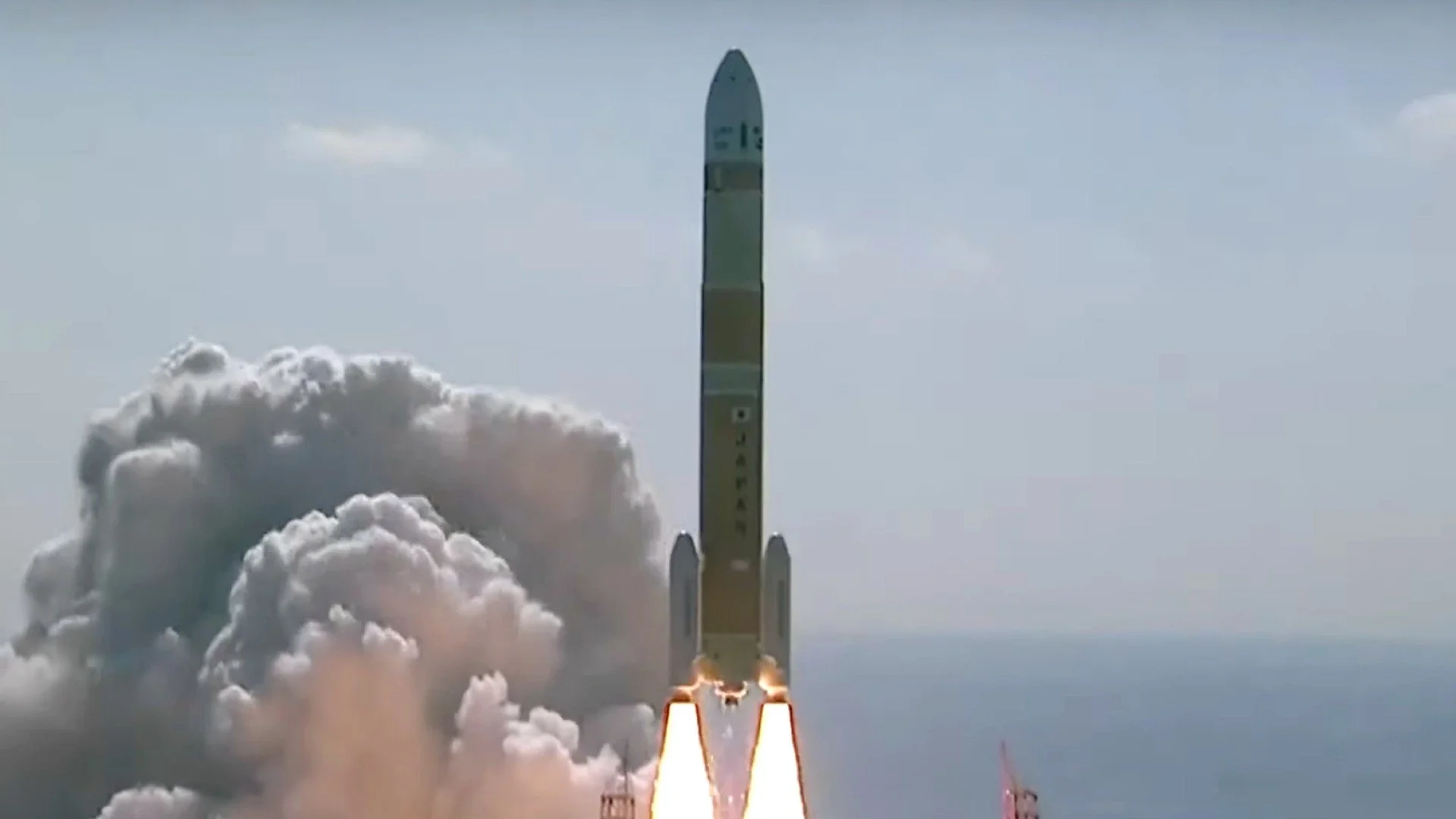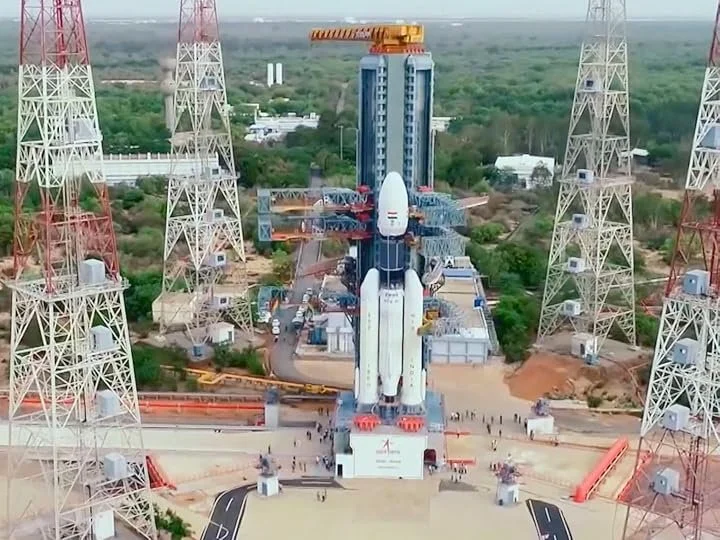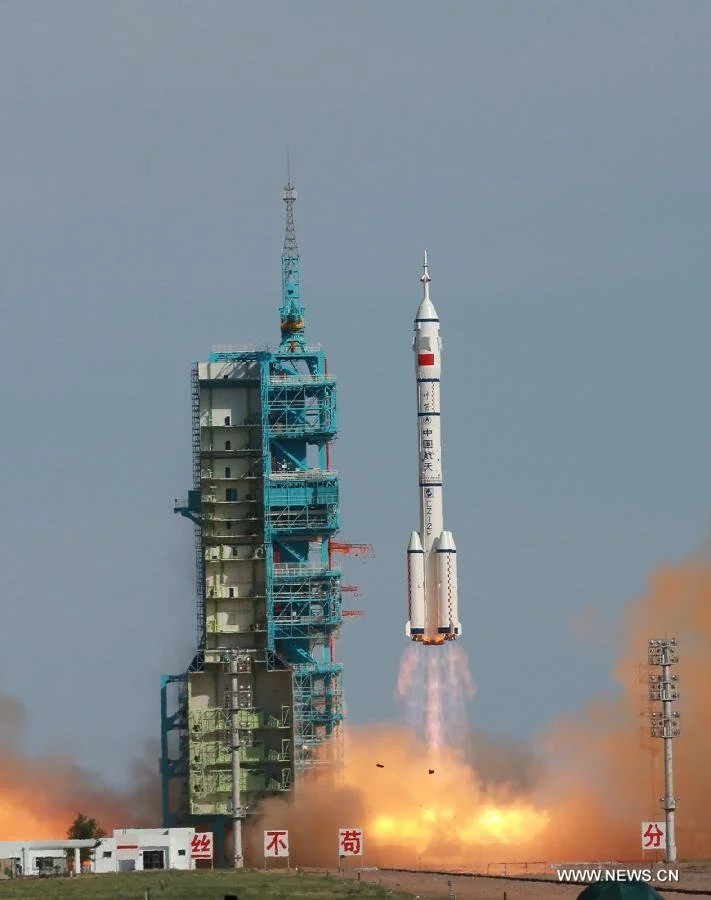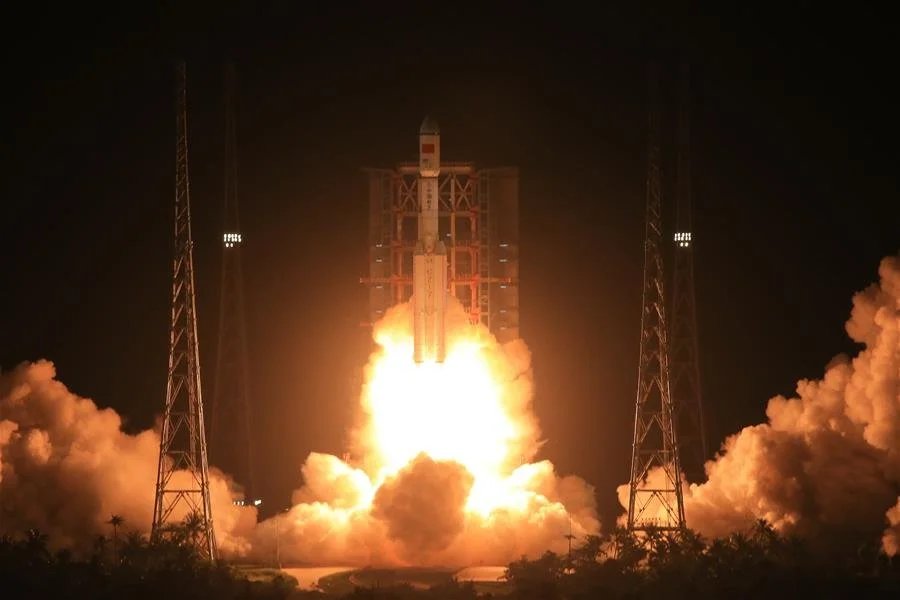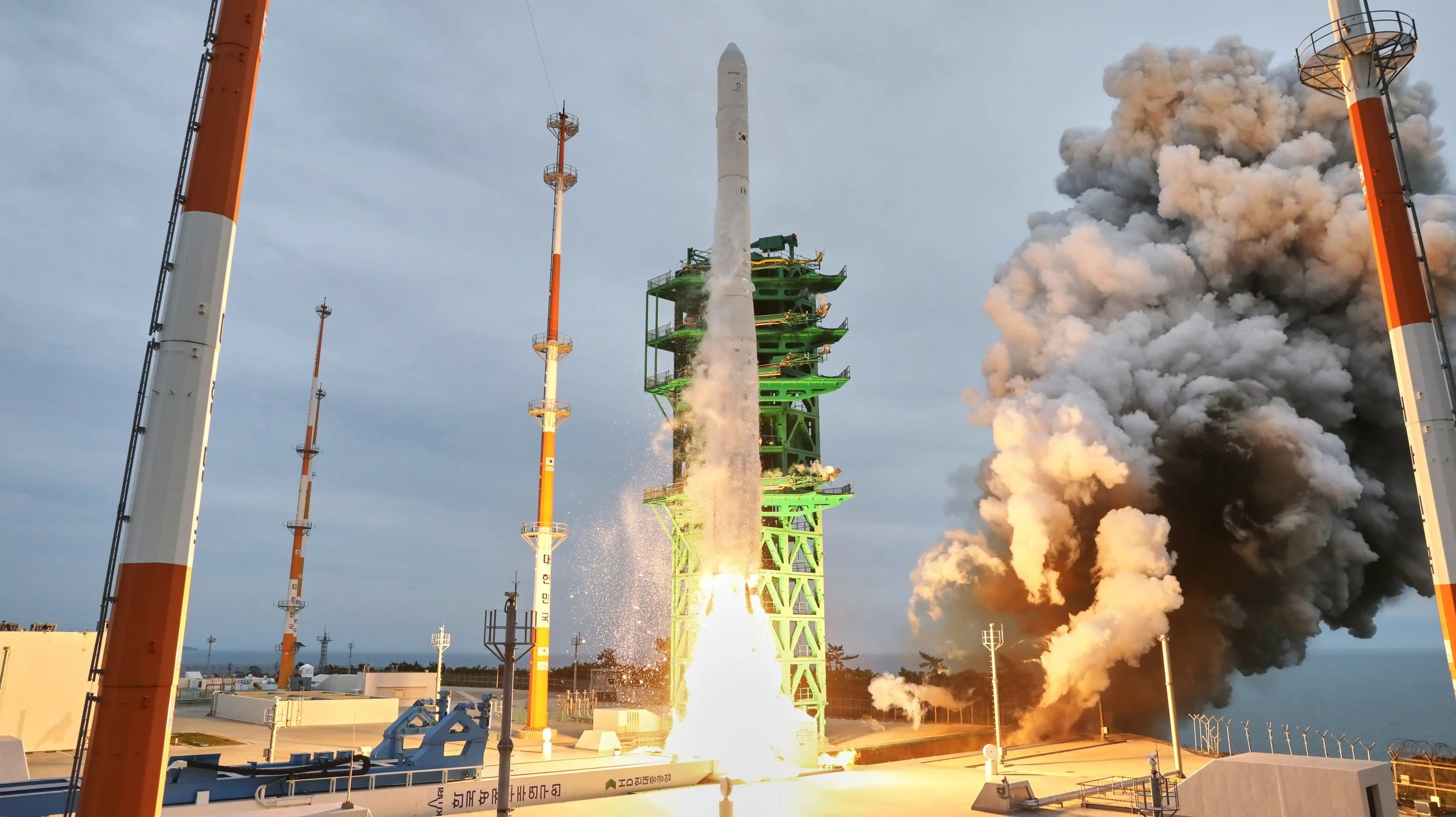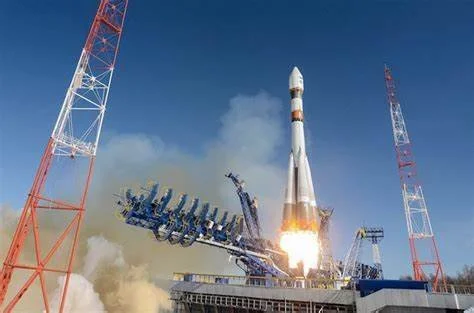Medium-lift launch vehicles
The Medium-Lift Launch Vehicle Index is your primary resource for rockets designed to carry payloads between 2,000 and 20,000 kilograms to low Earth orbit. These vehicles form the backbone of many commercial, government, and scientific space missions, offering a balance between heavy-lift capacity and cost efficiency. Medium-lift launchers are well suited for deploying larger satellites, small satellite clusters, and modules for space stations or deep-space missions. As global demand for reliable and scalable launch services rises, these rockets provide proven solutions for a wide range of orbital needs. This index covers key specifications and capabilities of leading launchers, emphasising how medium-lift systems support the growing space economy.
Angara-1.2
Angara-1.2 Khrunichev State Research and Production Space Centre RUSSIA
The Angara-1.2 is a 42.2 m (138 ft) tall, 2.9 m (9 ft 6 in) diameter, 171,500 kg (378,100 lb) two-stage launch vehicle. It can deliver:
LEO (200 km altitude):3,500 kg (7,700 lb)
SSO: 2,400 kg (5,300 lb)
LEO (1,500 km altitude): 1,600 kg (3,500 lb)
Current launch operations occur at Plesetsk Cosmodrome, Site 35, with Vostochny Cosmodrome planned for future missions.
Angara-1.2pp
Angara-1.2pp Khrunichev State Research and Production Space Centre RUSSIA
The Angara-1.2PP is a 40.4 m (132 ft) tall, 2.9 m (9 ft 6 in) diameter, ~181,700 kg two-stage launch vehicle used for sub-orbital test flights. It features a URM-1 first stage powered by an RD-191 engine and a URM-2 second stage with an RD-0124A engine.
Mission Type: Sub-orbital test flight
Launch Mass: ~181,700 kg
Stages: 2
First Launch Site: Plesetsk Cosmodrome, Site 35
The Angara-1.2PP was a one-time test configuration used in 2014 to validate the Angara launch system before operational flights of the Angara-1.2 and Angara A5
Antares
Antares Orbital ATK and Northrop Grumman USA
Antares known during early development as Taurus II, is an expendable medium-lift launch vehicle. Height 110/120 variant: 40.5 m (133 ft) 130 variant: 41.9 m (137 ft) 230/230+ variant : 42.5 m (139 ft), Diameter 3.9 m (13 ft) Mass 110/120/130 variants: 282,000–296,000 kg (622,000–653,000 lb) 230/230+ variants: 298,000 kg (657,000 lb)
Antares has a liquid first stage and solid fuel second stage with optional third.
LEO Payload Capacity: 8,000 kg (18,000 lb)
Status 110: retired 120: retired 130: retired 230: retired 230+: retired 300: planned
Antares is launched from Mid-Atlantic Regional Spaceport (MARS).
Atlas V
Atlas V United Launch Alliance USA
Atlas V consists of two main stages. The first stage is powered by a single RD-180 engine that burns kerosene and liquid oxygen. The Centaur upper stage uses one or two RL10 engines that burn liquid hydrogen and liquid oxygen. Strap-on solid rocket boosters (SRBs) are used in several configurations. Height up to 58.3 m (191 ft) Diameter 3.81 m (12.5 ft) and Mass 590,000 kg (1,300,000 lb).
LEO: 8,210–18,850 kg (18,100–41,560 lb)
GTO: 4,750–8,900 kg (10,470–19,620 lb)
Atlas V is launched from Cape Canaveral, SLC-41 and previously Vandenberg, SLC-3 (until 2022).
Geosynchronous Satellite Launch Vehicle
Geosynchronous Satellite Launch Vehicle (GSLV) ISRO India
GSLV is a expendable, medium-lift launch vehicle. It is a three-stage vehicle with solid, liquid and cryogenic stages respectively. It uses 4 iquid fueled boosters. Height 49.13 m (161.2 ft) Diameter 2.8 m (9 ft 2 in) Mass 414,750 kg (914,370 lb)
LEO Payload Capacity: 6,000 kg (13,000 lb)
SSO Payload Capacity: 3,000 kg (6,600 lb)
GTO Payload Capacity: 2,500 kg (5,500 lb)
GSLV rockets are launched from the Satish Dhawan Space Centre, India.
Gravity-1
Gravity-1 Orienspace China
Gravity-1 is a commercial rocket by Orienspace with three solid stages and a liquid fourth stage for final orbit insertion. It stands 30 m tall, 2.65 m in diameter, and has a launch mass of 400 tonnes. It’s used to launch small satellite clusters to LEO/SSO.
LEO: 6,500 kgs (14,000 lb)
SSO: 4,200 Kgs (9,300 lb)
Gravity-1 launches out of an offshore barge in the waters of Haiyang port. Gravity-1 offers a quick-response-time of only five hours between manufacturing completion and launch.
H3 rocket
H3 Rocket Mitsubishi Heavy Industries Japan
H3 Rocket is a Japanese expendable launch system. The H3 Launch Vehicle is a two-stage launch vehicle. The first stage uses liquid oxygen and liquid hydrogen as propellants and carries zero, two or four strap-on solid rocket boosters. Height 63m (207 ft) Diameter 5.27 m (17.3 ft) Mass 574,000 kg (1,265,000 lb) for H3‑24L variant.
SSO Payload Capacity: 4,000 kg (8,800 lb) for H3‑30 variant
GTO Payload Capacity: 4,000–7,900 kg (8,800–17,400 lb) for H3‑24 variant
H3 rockets are launched from Tanegashima Space Center in Japan.
Launch Vehicle Mark-3
Launch Vehicle Mark-3 ISRO India
The Launch Vehicle Mark-3 or LVM3 is a three-stage medium-lift launch vehicle developed by the ISRO. While the LVM3 is being human rated for Gaganyaan project, the rocket was always designed with potential human spaceflight applications in consideration. Height 43.43 m (142.5 ft) Diameter 4 m (13 ft) Mass 640,000 kg (1,410,000 lb)
LEO Payload Capacity: 10,000 kg (22,000 lb)
GTO Payload Capacity: 4,300 kg (9,500 lb)
TLI Payload Capacity: 3,000 kg (6,600 lb)
Launch Vehicle Mark-3 rockets are launched from the Satish Dhawan Space Centre, India.
Long March 2C
Long March 2C China National Space Administration (CNSA) CHINA
The Long March 2C (CZ-2C) is a medium-lift, two-stage launch vehicle developed by China Academy of Launch Vehicle Technology (CALT) and is Derived from the Dongfeng-5 ICBM. The rocket stands 42.0 m (138 ft) tall, has a diameter of 3.35 m (11 ft), and a launch mass of ~233,000 kg (513,700 lb). It is powered by two YF-21C engines on the first stage and one YF-24C engine cluster on the second stage, using UDMH/N₂O₄ propellants.
LEO Payload Capacity: 3,850 kg (8,490 lb)
SSO Payload Capacity: 1,400 kg (3,090 lb)
The Long March 2C launches from Xichang, Jiuquan, and Taiyuan Satellite Launch Centers.
Long March 2F
Long March 2F China National Space Administration (CNSA) CHINA
The Long March 2F (CZ-2F) is a human-rated, medium-lift launch vehicle developed by China Academy of Launch Vehicle Technology (CALT) for crewed Shenzhou missions and space station support. The rocket stands 62.0 m (203 ft) tall, has a core diameter of 3.35 m (11 ft), and a launch mass of ~497,000 kg (1,096,000 lb). It features four liquid-fueled boosters, a core first stage, and a restartable second stage, all using UDMH/N₂O₄ propellants.
LEO Payload Capacity: 8,400 kg (18,520 lb)
Primary Missions: Shenzhou crewed spacecraft
Tiangong space station support
The Long March 2F from the Jiuquan Satellite Launch Centre, supporting China’s human spaceflight program.
Long March 3 B/E
Long March 3 B/E China National Space Administration (CNSA) CHINA
The Long March 3B/E (CZ-3B/E) is an enhanced, heavy-lift launch vehicle developed by China Academy of Launch Vehicle Technology (CALT) for geostationary transfer orbit (GTO), lunar, and deep-space missions. The rocket stands 56.3 m (185 ft) tall, has a core diameter of 3.35 m (11 ft), and a launch mass of ~458,970 kg (1,011,900 lb). It consists of four liquid-fueled boosters, a core first stage, a hypergolic second stage, and a cryogenic third stage powered by liquid hydrogen (LH2) and liquid oxygen (LOX).
LEO Payload Capacity: 12,000 kg (26,460 lb)
GTO Payload Capacity: 5,500 kg (12,125 lb)
TLI (Lunar Injection): 3,900 kg (8,600 lb)
The Long March 3B/E operates from Xichang Satellite Launch Center.
Long March 3 C/E
Long March 3 C/E China National Space Administration (CNSA) CHINA
The Long March 3C/E (CZ-3C/E) is an enhanced, medium-to-heavy lift launch vehicle developed by China Academy of Launch Vehicle Technology (CALT) for geostationary, lunar, and interplanetary missions. It is a three-stage rocket with two liquid-fueled boosters. The E (Enhanced) version features increased payload capacity and structural improvements. The rocket stands 55.0 m (180 ft) tall, has a core diameter of 3.35 m (11 ft), and a launch mass of ~345,000 kg (760,600 lb). It consists of two YF-25 liquid boosters, a core first stage, a hypergolic second stage, and a cryogenic third stage using LH2/LOX.
LEO Payload Capacity: 8,500 kg (18,740 lb)
GTO Payload Capacity: 4,000 kg (8,820 lb)
TLI (Lunar Injection): 3,500 kg (7,720 lb)
The Long March 3C/E launches from Xichang Satellite Launch Centre.
Long March 7
Long March 7 CALT CHINA
Long March 7 (CZ-7) is a medium-lift two-stage rocket (with optional upper stage), using kerosene and LOX in both stages. It stands about 53.1 m tall, 3.35 m in diameter, and has a launch mass of 597 tonnes.
LEO: 13,500 kg (29,800 lb)
SSO: 5,500 kg (12,100 lb)700 km (430 mi)
GTO: 7,000 kg (15,000 lb)
TLI: 5,000 kg (11,000 lb)
Long March 7 launches out of the Wenchang LC-2 launch site.
Long March 8
Long March 8 CALT CHINA
Long March 8 is a two-stage rocket with kerosene and LOX engines, sometimes featuring a reusable first stage or boosters. It is 50.3 m tall, 3.35 m in diameter, and weighs 356 tonnes. It’s designed for rapid-response LEO/SSO launches.
SSO: Standard: 5,000 kg (11,000 lb)
Core only 3,000 kg (6,600 lb)
CZ-8A 7,000 kg (15,000 lb)
LEO: 8,100 kg (17,900 lb)
GTO: 2,800 kg (6,200 lb)
TLI: 1,500 kg (3,300 lb)
Long March 8 launches out Wenchang LC-2 and Commercial LC-1
Nuri
Nuri KARI South Korea
Nuri known as KSLV-II, is a South Korean three-stage rocket with all stages using RP-1 and LOX. It stands about 47.2 m tall, 3.5 m in diameter, and weighs 200 tonnes. Developed by KARI, it’s designed to deliver satellites to LEO and support South Korea’s independent launch capability.
LEO: 3,300 kg (7,300 lb)
SSO: 2,200 kg (4,900 lb)
GTO: 1,000 kg (2,200 lb)
Nuri launches out of the Naro Space Center, LC-2.
Polar Satellite Launch Vehicle
Polar Satellite Launch Vehicle Indian Space Research Organisation India
The Polar Satellite Launch Vehicle (PSLV) is an expendable medium-lift launch vehicle designed and operated by the Indian Space Research Organisation (ISRO). It was developed to allow India to launch its Indian Remote Sensing (IRS) satellites into Sun-synchronous orbits. Height 44 m (144 ft) Diameter 2.8 m (9 ft 2 in) Mass PSLV-G: 295,000 kg (650,000 lb) PSLV-CA: 230,000 kg (510,000 lb) PSLV-XL: 320,000 kg (710,000 lb)
LEO Payload Capacity: G: 3,200 kg (7,100 lb)
CA: 2,100 kg (4,600 lb)
XL: 3,800 kg (8,400 lb)
SSO Payload Capacity: G: 1,600 kg (3,500 lb)
CA: 1,100 kg (2,400 lb)
XL: 1,750 kg (3,860 lb)
GTO Payload Capacity G: 1,150 kg (2,540 lb)
XL: 1,300 kg (2,900 lb)
All PSLV launches have occurred from the Satish Dhawan Space Centre
Soyuz 2.1a
Soyuz 2.1a Roscosmos RUSSIA
The Soyuz 2.1a is a medium-lift, three-stage launch vehicle developed by TsSKB-Progress and operated by Roscosmos for crew, cargo, and satellite missions. The rocket stands 46.3 m (152 ft) tall, has a core diameter of 2.95 m (9.7 ft), and a launch mass of ~312,000 kg (687,800 lb). It is powered by four RD-107A booster engines, a core RD-108A engine, and a RD-0110 third-stage engine, all using RP-1/LOX propellants.
LEO Payload Capacity: 7,020 kg (15,480 lb)
SSO Payload Capacity: 4,500 kg (9,920 lb)
GTO Payload Capacity: 3,250 kg (7,165 lb) with Fregat upper stage
Soyuz 2.1a launches from Baikonur Cosmodrome, Vostochny Cosmodrome, and Plesetsk Cosmodrome.
Tianlong-2
Tianlong-2 Space Pioneer CHINA
The Tianlong-2 is a medium-lift, two-stage launch vehicle developed by Space Pioneer, a Chinese private aerospace company. It utilizies kerosene and liquid oxygen (RP-1/LOX) propellants. The rocket stands 32.8 m (107.6 ft) tall, has a diameter of 3.35 m (11 ft), and a launch mass of ~150,000 kg (330,700 lb). It is powered by three Tianhuo-12 engines on the first stage and a single vacuum-optimized Tianhuo-12 engine on the second stage.
LEO Payload Capacity: 2,000 kg (4,400 lb)
SSO Payload Capacity: 1,500 kg (3,300 lb)
Tianlong-2 launches from Jiuquan Satellite Launch Centre.
Vega C
Vega C AVIO EU
Vega C is a European expendable, small-lift launch vehicle. Building the Vega is a European multi-national effort led by Avio of Italy, which manages Vega development and oversees production as the prime contractor. Height 13.38 m (43.9 ft) Diameter 3.4 m (11 ft) Gross mass 155,027 kg (341,776 lb)
Polar Payload Capacity: 2,250 kg (4,960 lb)
SSO Payload Capacity: 2,300 kg (5,100 lb)
Vega rockets are launched from the ELV launch pad at the Guiana Space Centre.
Zhuque-2E
Zhuque-2E LandSpace China
Zhuque-2E is a Chinese medium-class orbital launch vehicle developed by LandSpace. It has a liftoff weight of 216 tonnes and uses 4 TQ-12 methalox engines in the first stage. The second stage uses one vacuum-optimized TQ-12 n combination with a TQ-11 engine which acts as a vernier thruster. Height Zhuque-2E: 47.3 m (155 ft) Diameter 3.35 m (11.0 ft)
Mass 219,000 kg (483,000 lb).
LEO Payload Capacity: 6,000 kg (13,000 lb) for Zhuque-2E variant
SSO Payload Capacity: 4,000 kg (8,800 lb) for for Zhuque-2E variant
Zhuque-2E rockets are launched from Jiuquan Site 96 China.
Zenit-3
Zenit-3 Yuzhnoye(design) and Yuzhmash (manufacturing) Ukraine
Zenit-3 have a number of configurations. Zenit-3SL, Zenit 3M, Zenit 3SLB and Zenit-3F. Optional 2 or 3 stages. Height 57–59.6 m (187–196 ft) Diameter 3.9 m (13 ft) Mass 444,900–462,200 kg (980,800–1,019,000 lb)
LEO: 6,100 kg Zenit-3SL
MEO: 3,965 kg (10,000 km, 45°)
GTO: 6,000 kg (13,000 lb) Zenit-3SL
4,000 kg (8,800 lb) Zenit-3F
3,750 kilograms (8,270 lb) Zenit-3SLB
Zenit launch locations include Baikonur, Site 45/1 and Sea Launch Ocean platform.
